Catholic Virtues
 |
 |
 |
 |
 |
 |
 |
True & False Paths to Happiness - XXI
Different Ways to Seek the Absolute
There are two kinds of souls in the Catholic Church. Some are abstract, theological and philosophical; others, on the contrary, are artistic, cultural and focused on the things of the Earth in the sense of directing them towards God. They are different routes, both legitimate.
The ‘man of the well’
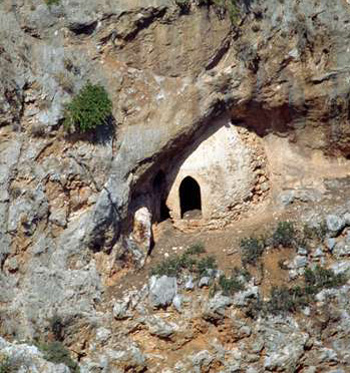 A striking example of the first type, in my view, is a Saint of the Ancient East who wanted to be united with God. So, he took a rope and dropped himself to the bottom of a well. There he found water and bread,
which was thrown down to him daily.
A striking example of the first type, in my view, is a Saint of the Ancient East who wanted to be united with God. So, he took a rope and dropped himself to the bottom of a well. There he found water and bread,
which was thrown down to him daily.
Why did he do this? Because he did not want the consideration of earthly things to take him away from God. This act seems very sublime to me, highly sublime! One should see in this action not just the aspect of penance, which is certainly something beautiful. But even more beautiful is the radicalism of his recollection.
To that man, the cry of a child or the bark of a puppy is distracting and disturbing. He does not waste time gazing up at the sun or the moon through the top of the well because he is meditating, deeply considering the things of God. For him God is the summit. He reads a passage from Scriptures, he interprets it, constructs a doctrine... It is a true marvel!
But there were also two great saints, St. Benedict and St. Bernard, who took another path: They sought out the beauties of nature to reach God. Here again, we see two families of different souls. St. Benedict preferred that his monasteries be placed on magnificent pinnacles, unveiling astonishing landscapes.
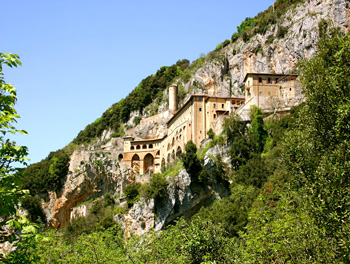 St. Bernard appreciated the suave, charming, smiling valleys, where he found repose from the grand heights of contemplation, thus entering into a friendly contact with his sister Nature. St. Francis of Assisi, singing of his brother birds, brother sun, sister moon and other creatures, transformed them into a kind of poem to
draw nearer to God.
St. Bernard appreciated the suave, charming, smiling valleys, where he found repose from the grand heights of contemplation, thus entering into a friendly contact with his sister Nature. St. Francis of Assisi, singing of his brother birds, brother sun, sister moon and other creatures, transformed them into a kind of poem to
draw nearer to God.
But the man of the well would consider the mountains and everything else a distraction.
In reality, they are two pronouncedly distinct families of souls; both converge for the glory of the Catholic Church.
Symbols of the absolute
Thus, in the temporal world there are creatures with very high degrees of perfection that refer us to the idea of God in a more excellent way than others. They are symbols of an absolute. An authentic spiritual life should encourage the admiration of these symbols, even when they are temporal or secular, as they are something that leads us to God in our daily life.
It is not a matter of a competition between the religious and temporal spheres; on the contrary, it is to use the symbols we see in temporal life as a way to reach the supernatural religious act, like a stairway that leads up to a monument,or like the railings and gardens that are around the monument and frame it.
Ascending to God by his vestiges in Creation
That is why St. Bonaventure says that “the Universe is the stairway by which we ascend to the Creator.” He notes that created beings have similarities to God: “In all things there are certain vestiges, images and likenesses of God.” (1)
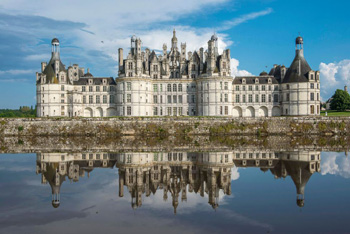 This ascension of a man to God by the vestiges, images and similarities of God that exist in created beings, or – as St. Bonaventure says in another passage – in the form of shadows, resonances or pictures of God, is what here we call the search for the absolute. (2) It is by this means that the thirst for the absolute can be quenched or mitigated.
This ascension of a man to God by the vestiges, images and similarities of God that exist in created beings, or – as St. Bonaventure says in another passage – in the form of shadows, resonances or pictures of God, is what here we call the search for the absolute. (2) It is by this means that the thirst for the absolute can be quenched or mitigated.
One manifestation of the absolute never repeats another. God does not stutter or pronounce a useless syllable. Thus, in everything that surrounds us we can see a sublime side. Unfortunately, the general tendency is to seek in beings only what is proportional to our own size, instead of looking for what recalls the infinity of God.
The search for the absolute through relative beings
Between God and man there is a separation. In Heaven we will know Him fully, although not in His entirety, for He is infinite. Totum sed non totaliter (In the whole measure we can receive, but not the totality of God), as St. Thomas says. (3)
On Earth, we can know Him in glimpses through the creatures, because it is possible to catch glimpses of the absolute through the relative. In the search for the absolute, one looks for the similarity that every relative being has to God as well as the archetype of each category.
Thus, a person who had never seen a flame and sees one in a painting would have a certain idea of what fire is, but he could never say that he really knew what it was. The greatest painter in the world cannot tell me what a lighted match says about the flame.
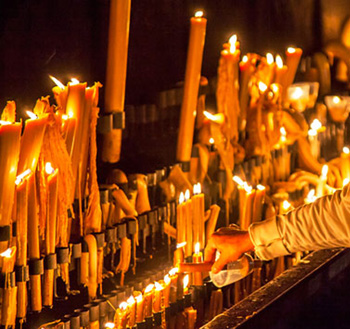 On the other hand, a blind man who had never seen a flame could form a certain idea of fire by touching a burning object with his finger.
On the other hand, a blind man who had never seen a flame could form a certain idea of fire by touching a burning object with his finger.
Between the painted flame and the actual blaze, between the sensation of burning heat and the real flame, there is an abyss. But there is also a similarity. This point is of great importance to elucidate the issue we are dealing with.
We have two degrees of knowledge here in this example. The painting and the lit match are two relative things that lead to the knowledge of another relative things, which is fire. But compared to the painting and the lit match, the fire has something absolute. Thus, ascending by degrees through the relative, we can come to have a certain knowledge of God, the only Absolute properly speaking.
For example: in the virtue of the strength, there is an Absolute that can be seen in successive degrees: in a rock (an inanimate being), an oak tree (vegetation), a lion (an animal), and Moses (a human being). We can then imagine this virtue in an angel: the angel of strength. Above this, there is God, who has no strength, but rather "is" strength.
The “angel of strength” is, therefore, still relative in view of the Supreme Perfection which is God and only God; but there is something absolute in that angel for those below him. The angel, therefore, has something relative and something absolute at the same time. And the same can be said for the degrees inferior to it.
The search for the absolute, therefore, considers in multiple relative beings what transcends them: In a panorama, in a castle, in a plant, in a stone or even, as we said, in a glass of draft beer... in a pheasant, a weeping willow, an amethyst, a palace, a poem, a historical character, and so on.
This ascent from relative beings to God constitutes what we call the exercise of transcendence. Doing this often we will acquire the habit, so when we present ourselves before Him, our souls will be thirsty to contemplate Him. (4)
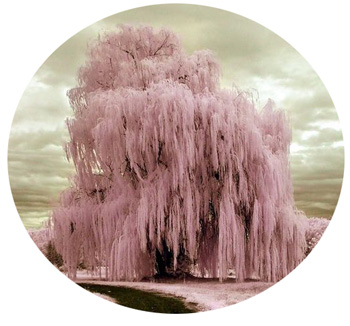
Continued

The ‘man of the well’

A hermit's cave
Why did he do this? Because he did not want the consideration of earthly things to take him away from God. This act seems very sublime to me, highly sublime! One should see in this action not just the aspect of penance, which is certainly something beautiful. But even more beautiful is the radicalism of his recollection.
To that man, the cry of a child or the bark of a puppy is distracting and disturbing. He does not waste time gazing up at the sun or the moon through the top of the well because he is meditating, deeply considering the things of God. For him God is the summit. He reads a passage from Scriptures, he interprets it, constructs a doctrine... It is a true marvel!
But there were also two great saints, St. Benedict and St. Bernard, who took another path: They sought out the beauties of nature to reach God. Here again, we see two families of different souls. St. Benedict preferred that his monasteries be placed on magnificent pinnacles, unveiling astonishing landscapes.

Subiaco, a Benedictine monastery nestled in the mountains
But the man of the well would consider the mountains and everything else a distraction.
In reality, they are two pronouncedly distinct families of souls; both converge for the glory of the Catholic Church.
Symbols of the absolute
Thus, in the temporal world there are creatures with very high degrees of perfection that refer us to the idea of God in a more excellent way than others. They are symbols of an absolute. An authentic spiritual life should encourage the admiration of these symbols, even when they are temporal or secular, as they are something that leads us to God in our daily life.
It is not a matter of a competition between the religious and temporal spheres; on the contrary, it is to use the symbols we see in temporal life as a way to reach the supernatural religious act, like a stairway that leads up to a monument,or like the railings and gardens that are around the monument and frame it.
Ascending to God by his vestiges in Creation
That is why St. Bonaventure says that “the Universe is the stairway by which we ascend to the Creator.” He notes that created beings have similarities to God: “In all things there are certain vestiges, images and likenesses of God.” (1)

Seeking the absolute in marvels like Chambord Castle
One manifestation of the absolute never repeats another. God does not stutter or pronounce a useless syllable. Thus, in everything that surrounds us we can see a sublime side. Unfortunately, the general tendency is to seek in beings only what is proportional to our own size, instead of looking for what recalls the infinity of God.
The search for the absolute through relative beings
Between God and man there is a separation. In Heaven we will know Him fully, although not in His entirety, for He is infinite. Totum sed non totaliter (In the whole measure we can receive, but not the totality of God), as St. Thomas says. (3)
On Earth, we can know Him in glimpses through the creatures, because it is possible to catch glimpses of the absolute through the relative. In the search for the absolute, one looks for the similarity that every relative being has to God as well as the archetype of each category.
Thus, a person who had never seen a flame and sees one in a painting would have a certain idea of what fire is, but he could never say that he really knew what it was. The greatest painter in the world cannot tell me what a lighted match says about the flame.

Seeing a flame is different from hearing its best description
Between the painted flame and the actual blaze, between the sensation of burning heat and the real flame, there is an abyss. But there is also a similarity. This point is of great importance to elucidate the issue we are dealing with.
We have two degrees of knowledge here in this example. The painting and the lit match are two relative things that lead to the knowledge of another relative things, which is fire. But compared to the painting and the lit match, the fire has something absolute. Thus, ascending by degrees through the relative, we can come to have a certain knowledge of God, the only Absolute properly speaking.
For example: in the virtue of the strength, there is an Absolute that can be seen in successive degrees: in a rock (an inanimate being), an oak tree (vegetation), a lion (an animal), and Moses (a human being). We can then imagine this virtue in an angel: the angel of strength. Above this, there is God, who has no strength, but rather "is" strength.
The “angel of strength” is, therefore, still relative in view of the Supreme Perfection which is God and only God; but there is something absolute in that angel for those below him. The angel, therefore, has something relative and something absolute at the same time. And the same can be said for the degrees inferior to it.
The search for the absolute, therefore, considers in multiple relative beings what transcends them: In a panorama, in a castle, in a plant, in a stone or even, as we said, in a glass of draft beer... in a pheasant, a weeping willow, an amethyst, a palace, a poem, a historical character, and so on.
This ascent from relative beings to God constitutes what we call the exercise of transcendence. Doing this often we will acquire the habit, so when we present ourselves before Him, our souls will be thirsty to contemplate Him. (4)

A pink Weeping Willow tree after a snow,
a marvel of nature
Continued

- The Journey of the Mind into God, cap. I, 2.
- Ibid., (I, 11, 14, ), (II, 13).
- Summa Teologicae I, q. 12, a. 7, ad 3.
- Here, let us emphasize that this is different from the Gnostic or pantheistic idea that divinity is present in everything and, therefore, also in the relative. For these heresies, God is either imprisoned in the universe (gnosis) or would be confused with Him (pantheism).
Posted November 20, 2020





